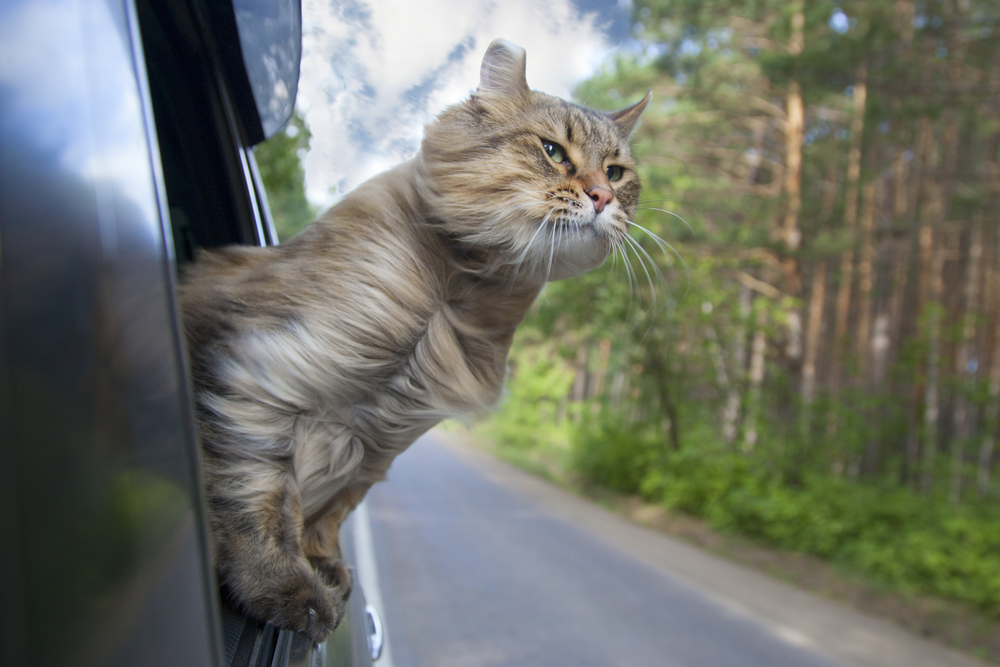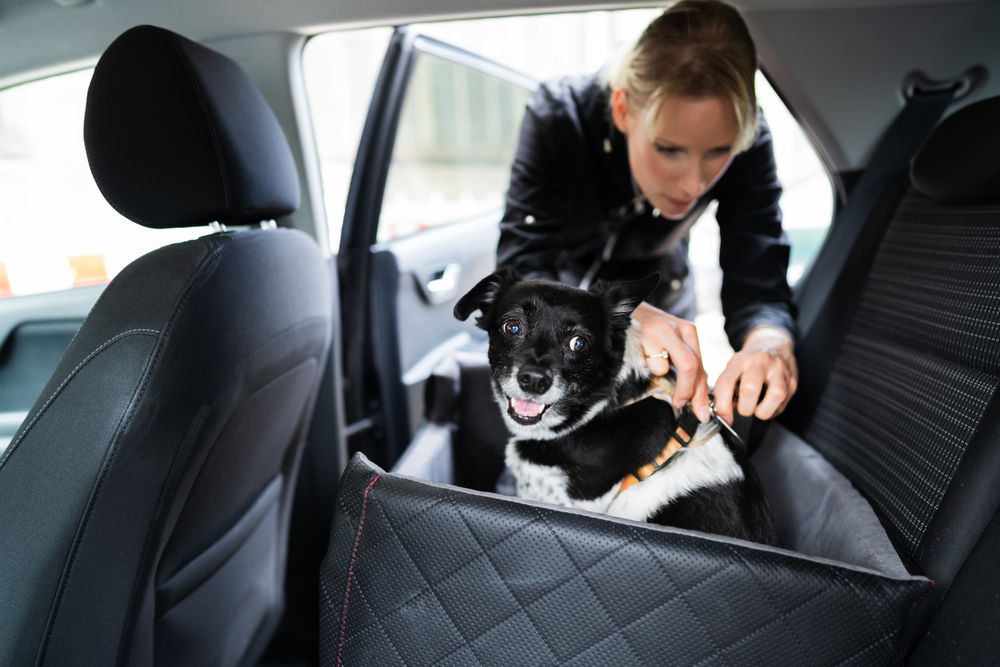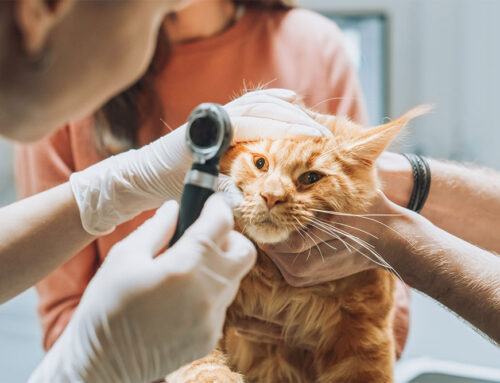Whether you and your pet are taking a quick trip across town or heading out on a weeklong adventure, prepare them to be a good—and safe—sidekick. To ensure you and your pet reach your destination safely, brush up on our Livingston Veterinary Hospital team’s car safety tips.
#1: Choose your pet’s restraint system
When traveling with your pet, they must be safely restrained, which protects them and you in case of a vehicle accident. Seat belts that attach to a clip on the back of a safety harness are a good option. Depending on your pet’s size and personality, a crate or carrier may be safer than a seat belt. Tiny breeds are too small to be comfortable in a seat belt, as they may be unable to overcome the seat belt’s tension. Carriers or crates are a good option for these pets, because the cozy enclosures can be securely buckled in to prevent them from shifting. In addition, active pets who are unable to sit still in a seat do best confined to a crate. When choosing a crate, ensure your pet has enough room to stand up, turn around, and lie down comfortably. You do not want your pet to be uncomfortable in a cramped crate, because they should enjoy the trip, too.
#2: Create your vehicle’s pet-proof area
Accidents of the bathroom kind can occur while on the road with your pet. To ensure easy clean up, put down a cargo mat or liner that has lipped edges to contain the mess until you can clean up. Remember to pack plenty of cleaning supplies, such as paper towels, disinfectant, waste bags, litter, and disposable trays, to easily clean up any accidents that occur in the car or at elimination stations along the way.
#3: Double check your pet’s identification
Before heading out on a road trip with your pet, double check that they are wearing their collar, with their identification tag securely attached. Ensure the tag’s engraving is legible and includes your up-to-date contact information.
If you worry about your pet’s identification tag fading, falling off, or being removed, you may want to have them microchipped to ensure their lifelong, permanent identification. With a microchip, your pet stands their best chance of coming home if they become separated from you. Keep in mind, you must update your information with the microchip company when you get a new phone number or home address.
#4: Pack your pet’s essentials
Before your road trip, be sure to pack all your pet’s essentials, such as their medications, preferred foods and treats, bedding, favorite toys, and a spare collar, harness, and leash. Include your pet’s recent color photo in case they go missing. In addition, keep handy a list of animal shelters and veterinary hospitals along your route.
#5: Prevent pet escapes
When you open your vehicle door, your pet may take that as a sign they should get out, too. If they are untethered, they may get loose, and run away or get hit by a car. To avoid heartbreak, prevent your pet’s escape by clipping on and securing their leash inside your vehicle before opening the door. If your pet will be getting out of the vehicle with you, ensure their collar or harness is securely latched or buckled, and that the leash is fully fastened, before allowing your furry pal to get out and stretch their legs or have a bathroom break.
#6: Take regular breaks while traveling with your pet
Your pet will likely need more frequent breaks than you, so stop every couple of hours to give them a chance to stretch their legs, get a drink of water, and go to the bathroom. Cats especially find travel stressful, and need frequent opportunities to use the litter box, because they may refuse to urinate or defecate as often as they need to.
#7: Don’t leave your pet unattended in the vehicle
Avoid leaving your pet unattended in the car, especially in hot weather. Your pet may become anxious when left alone, and they could quickly overheat in hot and humid conditions. When you plan people-only activities, allow your pet to stay comfortable in your pet-friendly lodgings while you shop or eat.
#8: Don’t let your pet hang their head out a moving vehicle’s windows

Your pup may enjoy the breeze in their face, but this situation can easily lead to eye, ear, or head injuries from flying debris that may be as tiny as grit or as large or larger than an empty soda bottle. To avoid injury, your pet must keep their head inside the moving vehicle. By keeping the vehicle’s windows closed, you prevent your pet from becoming crushed if an open window inadvertently rolls up, and you keep them from jumping out of the moving vehicle. In addition, the sight of your adorable pooch hanging their head out the window can dangerously distract you and other drivers, so keep your moving vehicle’s windows closed to keep everyone safe—your pet, your passengers, other drivers, and yourself.
Follow our tips to ensure a safe and enjoyable road trip with your pet, and schedule an appointment with our Livingston Veterinary Hospital team to discuss additional travel safety precautions, such as ensuring your pet’s vaccinations are current.







Leave A Comment